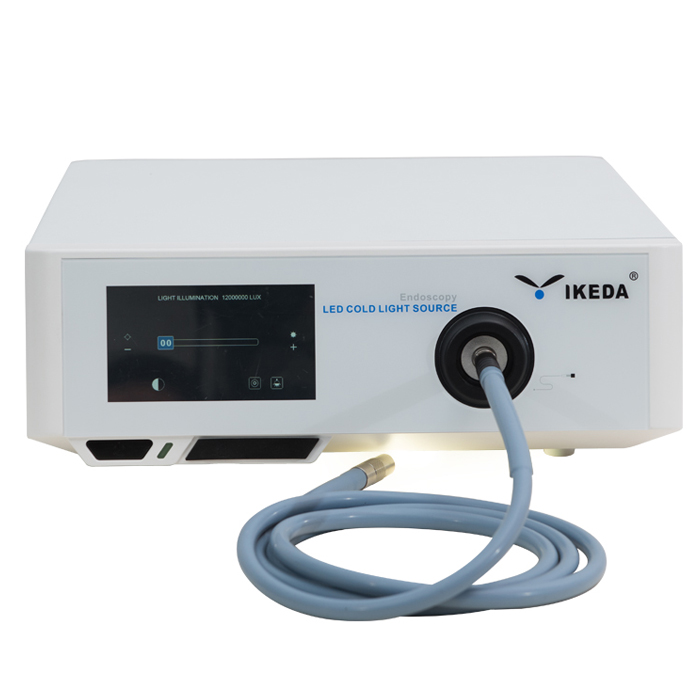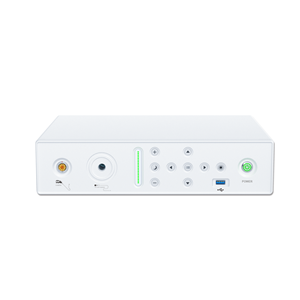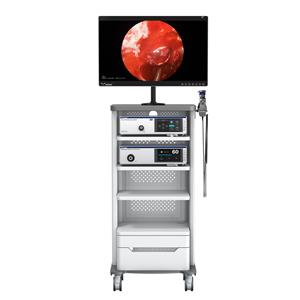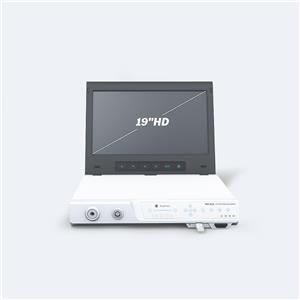What type of lamp is used in most endoscope light sources?
Traditional endoscope lighting methods generally use light sources such as halogen lamps or xenon lamps, and then use optical fiber bundles to transmit the light to the end of the endoscope lens, and then illuminate the target. With the rise of LED lights, there are more options for the lighting methods of endoscopic cameras. How to choose a more suitable and efficient lighting method is a problem that endoscope researchers and designers must consider.
The endoscope light source is an important part of visual inspection applications, and it is the final effort to obtain clear and bright endoscopic images with true color reproduction; the choice of illumination light source depends on the type of endoscope used, we provide users with There are a wide variety of light source types to choose from such as: power level, lighting type, portability and light guide cables of different lengths and materials.

Generally, endoscope cameras use independent cold light sources, and the light is transmitted to the inspection position by optical fibers. In order to achieve better lighting effects, the requirements for light sources and optical fibers are very high. Cold light sources are light sources that emit light through chemical energy and biological energy. With the emergence of low-invasive surgery (MIS), the endoscope needs to display images through the monitor, so the requirements for the cold light source are more stringent, and the optical performance of the cold light source must match the optical performance of the related device to achieve the entire observation display. The best visual effect of the system.
In addition to the optical requirements, the endoscope light source design has other basic requirements, such as: long life, fast lamp replacement, reasonable ventilation and heat dissipation, and no environmental pollution.
What type of lamp is used in most endoscopy light sources?
With the continuous improvement of LED optical engine in brightness and wide wavelength range, it is more and more favored by endoscopic systems. The correlated color temperature can be customized when producing LEDs, and the LEDs provide a stable correlated color temperature over their entire lifetime. The LEDs have a long life, so they do not need to be replaced frequently in endoscopy systems.
Features of LED cold light source:
1. Wide color gamut. This feature is very beneficial for internal use in pipelines. LED light sources have a wider color gamut, higher color saturation, better color expression, and better image quality. It is another advancement in color for DLP projection after BrilliantColor.
2. No color wheel is used. In DLP projectors using traditional light sources, the color wheel is a component that is relatively easy to damage and affects the overall life, and generates a certain amount of noise. After using three primary colors of LED light sources, DLP projectors can not use the color wheel. This component, thereby reducing noise and improving overall life.
3. Long service life and long service life are equally important to endoscopes. The lifespan of UHP bulbs commonly used for DLP splicing large screens is between 3000 and 6000 hours. The cost of a UHP bulb is thousands of yuan, and it has become the best choice for rear-projection splicing walls. Large maintenance consumables, and the LED light source usually has a lifespan of more than 50,000 hours, so that the DLP splicing screen does not need to replace the light source for almost a lifetime, saving a lot of application costs.
4. The LED light source also has the advantages of low power consumption and low heat generation, which also improves the overall brightness and contrast consistency of the DLP splicing large screen.




